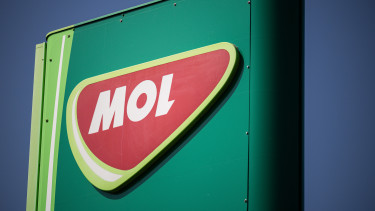The Hungarian banking reform occurred 35 years ago – What did it bring?

The socialist dogma was that money supply can be regulated only if not just central banking, but also commercial banking functions are fulfilled centralised, under the control of the state. The bank of the country was the Hungarian national Bank (MNB according to its Hungarian name) which held a monopoly not only over central banking but also over international financial operations and the bulk of lending to companies. The bank of individuals was the National Savings Bank (OTP), also under strict state control and with exclusive rights. Only some specialised financial institutions were operating: the Hungarian Foreign Trade Bank was the bank of foreign trade companies, Pénzintézeti Központ kept the bank stubs retained from the commercial banking system from before the socialist takeover and some limited, mainly inter-state financial operations like the reimbursement of claims of holocaust survivors from Western Germany (this also lost its “Western” epithet). The State Development Bank (ÁFB) was, besides advising the Ministry of Finance on investment matters, financing state projects and objectives (energy savings among them). The Budapesti Hitelbank (Budapest Credit Bank) was also independent only nominally and Hungarian banks abroad were subsidiaries of the National Bank. Liberalisation started with the so-called small banks which were destined to remedy the lack of innovation funds, also under strict control but not directly owned by the state.
At the same time both the need to complete the “New economic mechanism” of 1968, giving limited independence to enterprises (which could only be slowed down but not stopped by the conservative wave of the mid-seventies) and the opinion of the advisors from the World Bank (which Hungary joined the early eighties) pointed out the need to create a mechanism to foster the efficient use of capital. There were three directions to follow: make competition more free, liberalise ownership and make financing more flexible. Political conditions did not enable to follow the first two, on the other hand it was accepted that indirect economic governance can be applied also in the financial system. The MNB, on their side, were reluctant to give up their lending quasi-monopoly, and tried to prevent further changes, by creating sectoral directorates within its organisation to simulate the separation of central banking and commercial banking functions. These directorates became later the basis of the three big commercial banks.
The road was of course not so easy. Although following the oil crisis of the late seventies, the need arose to increase the dynamics of the economy by improving economic motivation and thus liberalisation, as soon as the pressure was eased in the early eighties, opponents of reforms gained the upper hand. But then came Afghanistan and the credit crunch with it and Hungary joined the Bretton-Woods system in 1982, i.e. the World Bank and the IMF. The reform was on the agenda without political undertones in the years which followed, Company councils (self-management organisations simulating boards of owners) were introduced in 1986 and the banking system was reformed in January 1987, followed by a tax reform in 1988.
Meanwhile also foreign banks got an – although limited – possibility to start. The Central European International Bank was first an offshore bank, like the Hungarian subsidiary of Citibank also. These banks financed mainly the exports of blue chip companies in foreign (convertible) currencies. Bulk of the banking services for companies remained the remit of the three big commercial banks created from the sectoral directorates of the Hungarian National Bank, the most critical monopoly being keeping current accounts while retail accounts remained the prerogative of OTP. Lending was subject to minutious quantitative regulation. Thus, lending was only possible using the refinancing loans of the MNB and thus the central bank, and through it economic policy could still keep money supply in hand. Two areas were taboo for domestic banks: retail banking and foreign currency operations as the managers of economic policy were worried that by letting these two areas free they would lose control over the economy – over retail savings and loans and the balance of payments. It is easy to say with hindsight that the worries were unfounded but the limitations weakened significantly the competitivity and resilience of the banks.
Foreign exchange limitations did not bind the foreign banks. A new foreign-owned bank was created the first of January 1987: the Unicbank as joint venture of German and Austrian cooperative banks, IFC, a member of the World Bank group and some Hungarian banks became the first foreign bank also licensed for domestic operations. The Citibank subsidiary, offshore till then, also started its domestic operations soon, while CIB only established its domestic banking subsidiary in 1988. MKB, the Hungarian Foreign Trade Bank, also gradually extended its activities for domestic enterprises.
Interinvest, supporting foreign trade deals with no quite banking but basically financing transactions, became Interbank, later, until the merger of IBSP and Intesa: Inter-Európa Bank). The Italian Istituto Bancario San Paolo di Torino acquired part of its capital in 1989. The “small” innovation banks continued to operate and slowly some subsidiaries were created (Merkantil Bank by OKHB, now K&H, European Commercial Bank with the participation of OTP). Still, the really important players of the two-level banking system became the three big banks separated from the MNB. This is characterised by the fact that K&H, created from the merger after the acquisition by foreign owners of two of them and the third, Budapest Bank, are still significant competitors in the Hungarian banking market.
The reason is that the financing of enterprises was shared between these banks, retaining greatly the distribution of tasks within the National Bank: Magyar Hitel Bank (Hungarian Credit Bank, MHB) inherited most of the industry, the OKHB the trade and agriculture while Budapest Bank received the mining and energy sector among the companies linked to the headquarters. This latter, however, also received the portfolio of Budapesti Hitelbank, i.e. small and medium enterprises seated in central Hungary and in the capital. The branches in the countryside were also distributed between the three banks, thereby somewhat diversifying their clientele, the concentration of their portfolio by sectors nevertheless caused problems for them.
It would be difficult to find a more diverse triad than the chief executives of the three banks: Sándor Demján, head of MHB was a seasoned businessman, his previous successes, however, were not just due to his business acumen, but his good possibilities within the socialist system, heading a cooperative department store chain (Skála). His professional past was linked more to the cooperative sector, de did not have huge industrial experience, in particular not linked to the heavy industry. His objectives for the bank were also oriented to dealmaking and growth and did not worry much about risks. Hungarian industry was heavily burdened with risks, however, in the eighties and nineties, the structural changes put many of these companies on the dry.
The second bank was deputy president of MNB before, he lead the directorate handling the portfolio inherited by his bank, OKHB. He assembled mostly his ex-colleagues in management. Lajos Bokros, who took over Budapest Bank after Oszkár Hegedűs, ex-chief of Budapesti Hitelbank, was at the research institute of the Ministry of Finance (Pénzügykutató) before. He was heavily involved in working out the theory and structure of the banking reform (together with László Asztalos, who headed later the supervisory authority for insurance companies and with György Surányi, later president of the National Bank), he also published many articles about it.
The difficulties of the big banks and also some small banks soon faced, were conditioned not just by the quality of the portfolios and the management, but also that of staff. Mr Demján motivated his management team in MHB very successfully, but this also meant that they also aligned themselves with the “dealmaking and growth” philosophy of their boss. The team of OKHB was good in administration but they did not excel in managing the product and client portfolio. The mining and energy companies of Budapest Bank were not success stories either but they represented a smaller part and were less in trouble due to their strategic importance. My impression was also at that time that the internal regulations of this bank were more systematic than that of the others.
Other background institutions followed the banking reform with delay. Interbank payments were settled for some years by the National Bank, the independent Giro system followed in the early 90s. Regulation was entrusted to the Bank Supervision reporting to the Minister of Finance, but the National Bank also maintained a “Banking Department”, managing also liquidity. Their activity could be discussed in a separate article. They were also in a learning mode and did not have much power. Making the write-offs of banks tax-free, introduction of audits, whether the clients of banks can also be shareholders were discussion points among others.
Professional training was not all-important for a while. Although the National Bank received funds from the World Bank, this was allocated to the commercial banks only slowly and were not sufficient to re-train a whole generation of professionals. The Banking Training Centre (Bankárképző) was created independently from the reform (although also mainly from World Bank funds) and only two years after it. First they delivered courses of the French bank training centre and it was not easy to find Hungarian lecturers in all areas either.
At least the theory of the two of the most important domains, financial markets and liquidity management, but advanced corporate risk was virtually unknown to everyone. In fact the interbank financial market also took off slowly and there were no financial markets requiring more sophisticated knowledge, the main source was refinancing loan (from the MNB) and this was limited only quantitatively (as mentioned, to limit money supply).
Company rating was limited to the three “World Bank ratios” (liquidity, debt service coverage and leverage) – few had the occasion to work together with the analysts of the IBRD and acquaint themselves with more details –, it is typical that the textbook about the methodology of World Bank appraisal was written by an outstanding economic theorists, János Kornai, of course from the viewpoint of his theoretical approach.
Analysing company management seemed to be mundane for many while these managers had to guide their companies through murky waters, bound even by a lot of limitations. The problem of non-diversified portfolios came to light in this phase, so no wonder that the quality of the lending portfolios deteriorated fast, and the banks had to be rescued soon.
The technical background was also weak, modernisation was prepared in two banks, but it happened only much later – the foreign owners entering the scene during privatisation had enough money, will and opportunity –, we should not forget that we talk about the eighties when shortage of convertible currency, ideological worries and sometimes even the COCOM list hindered the acquisition of western technologies.
All this was true not just for the three big banks but also for the small innovation banks. They were created besides a bank (mainly the State Development Bank, less the MNB) by sectoral ministries. Therefore there were separate innovation banks for agriculture, industry, industrial cooperatives, construction (the General Venture Bank established by the National Bank was a notable exception) and therefore their portfolio was also not diversified. The problems of enterprises with a similar profile appeared simultaneously. Financing innovation carries a higher risk anyway, in particular if political interference also distorts decisions.
Banking attracted at that time also adventurers, and fraud also played a role that the Hungarian banking systems faced the system change weakened and could survive the further shocks of it only by state capital injections and subsequent involvement of foreign strategic investors – even so, not all succeeded. For example, ABN AMRO had to sell ABN-Amro Hungary, created from MHB, to its competitor to create the K&H Bank of today.
The surviving small banks were bought up by foreign banks and either developed further or, like Erste Bank created from the merger of Mezőbank and Agrobank (two agricultural innovation banks, the second becoming insolvent in 1994, before the merger), were the basis of a further acquisition, in this case of the Postbank. After the system change and privatisation some became thus foreign-owned, others disappeared (either because the buyer then left the market or as they did not find a suitable buyer). Ybl bank (the construction innovation bank, named after the builder of the Opera house, St Stephen’s Basilica and other notable Hungarian buildings of the turn of the 19th and 20th centuries) almost collapsed in 1992 due to the manipulations of its management and owners, became part of the Budapest Bank group but could not survive even so.
The relative advantage of the commercial banking and the complementary innovation banks in developing the economy was compensated by the structural weaknesses of the banking system (and of the economy) and therefore the banks could bear the system change and the associated shocks only the hard way, and could survive – even that not all of them – with a capital injection by the state and the contribution of foreign owners.
László S. Szabó
The author wants to thank Miklós Pulai, Júlia Király, Rezső Nyers Jr., Péter Felcsuti, Klára Csoór, Tamás Rusznák, György Iványi, Andrea Alpár and other past bank managers, as well as the authors of the book „The History of the Hungarian Baking Association” for sharing their views and memories with him.
This article reflects the views of the author, which do not necessarily reflect those of the Portfolio editorial team.
Cover photo: Shutterstock











